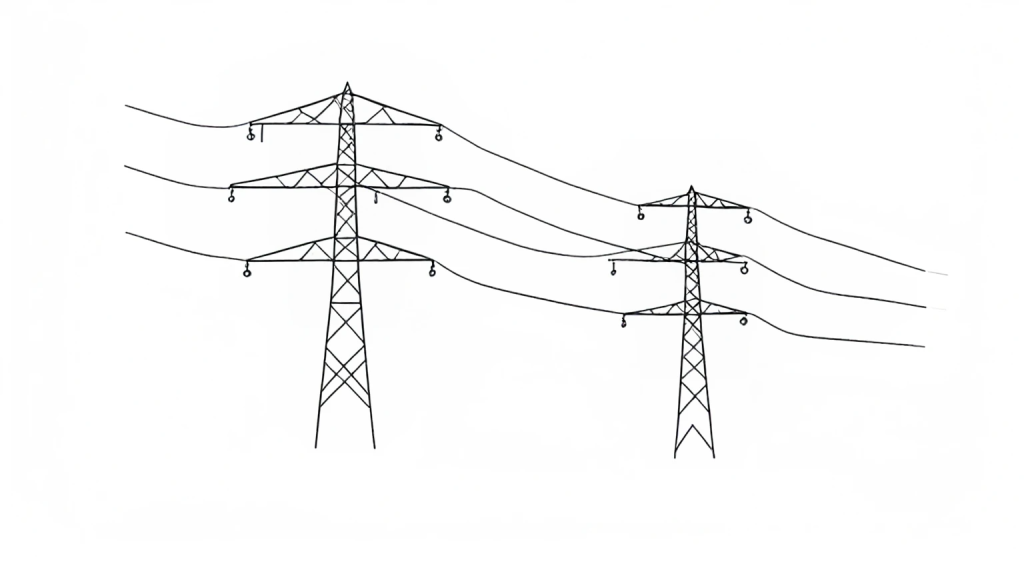Contatc
A Comprehensive Guide to Transmission Line Testing
2025-02-07
Comprehensive Guide to Transmission Line Testing
The maintenance of electrical power systems depends heavily on transmission line testing as a fundamental practice. Electricity reaches residential and commercial spaces as well as industrial facilities throughout the nation through high-voltage transmission lines. Sound operation of these systems needs scheduled testing along with periodic inspections. This complete comprehensive guide to transmission line testing through their methods and techniques and equipment functions that sustain electrical power system stability along with reliability.
Transmission Line Testing Remains Essential Because of its Crucial Role
Electrical transmission lines along with their proper maintenance function as power delivery connectors that need dependable operation to establish stable power systems. The active lines accumulate problems from normal use that include damage due to aging elements including insulation deterioration together with electrical breakdowns that produce distribution interruptions. Transmission line testing combined with transmission line maintenance testing detects problems before they evolve into significant issues.
Types of Transmission Line Testing
Different essential assessment methods exist for transmission line examination according to detected problems. The following section analyzes the frequently used testing methods.
Insulation Testing
The electrical insulation surrounding transmission lines receives its integrity check through insulation testing procedures. The test locates locations with degraded insulation that might cause faults to occur. Insulation resistance testers are among the tools used specifically for this test procedure. Effective power delivery depends on scheduled insulation testing since it stops potential failures from occurring.
Corona Testing
Corona discharge transmits electrical energy through the transmission line air that both leads to energy dissipation and might result in insulation deterioration. The detection of corona effects requires equipment such as corona cameras as part of corona testing operations. Early identification of corona discharge enables organizations to take measures to reduce possible threats and risks.
Partial Discharge Testing
Detection of electrical discharges within insulation surfaces of cables and conductors is possible through partial discharge testing. The identification of localized insulation damage at an early stage is critical through this testing methodology. Partial discharge detectors serve as the main equipment for conducting PD testing operations.
Power Factor Testing
Power factor testing allows operators to check the operational efficiency of transmission line insulating materials. The phase comparison of voltage to current outputs results in a test that determines the operational efficiency of the transmission line. Measuring power factor enables vital line health inspections because weakened insulation produces low power factor readings.

Advanced Testing Methods of Transmission Line
The need for basic testing remains critical but additional advanced techniques offer comprehensive evaluations of the entire transmission line system. The assessment tools consist of time domain reflectometry (TDR) as well as sweep frequency response analysis (SFRA).
Time Domain Reflectometry (TDR)
The transmission line fault detection process utilizes TDR testing which sends a pulse through the line for subsequent measurement of the reflected signal. Indoor cable fault detection becomes more accurate through this method. Equipment based on TDR constitutes a critical tool for finding open circuits as well as short circuits in transmission lines.
Sweep Frequency Response Analysis (SFRA)
The SFRA application detects both mechanical damage as well as any variations in the transmission line impedance. The method works well to assess the state of underground cables and transformers. The health condition of a system becomes visible in great detail through the usage of SFRA testing equipment.
Vibration Monitoring
When monitoring vibration on overhead transmission lines technical staff assess the mechanical stresses the lines endure. The transmission line and towers incur physical harm when vibrations become too intense. The examination depends on vibration sensors that track live system movements.
Testing Equipment
Specific tools are necessary to perform transmission line tests since these tests need precise instruments and safety protocols. The essential equipment used for the evaluation of transmission lines will be discussed.
High Voltage Test Equipment
Equipment designed to produce high-voltage tests both verify transmission line dielectric strength and check their ability to withstand electrical loads. High voltage generators together with voltage regulators comprise part of this equipment.
Cable Fault Locators
When detecting cable faults the equipment allows users to discover the exact locations of problems, especially in underground cable networks. The diagnostic device utilizes TDR along with various other methods to detect cable faults.
Thermal Imagers
The inspection of transmission lines for thermographic evaluations uses thermal imaging systems. The camera system surveys transmission line temperatures to identify potential issues that arise from poor connections and insulation failure.
LiDAR Technology
The innovative inspection method LiDAR (Light Detection and Ranging) provides aerial transmission line surveys. LiDAR inspection provides engineers with the ability to check line conditions and monitor both vegetation encroachment and safety obstacles near lines.
Best Practices for Transmission Line Testing
Transmission line testing practices at their best level help power systems achieve extended performance alongside dependable operation. Here are some recommendations:
Regular Testing and Inspections
Regular tests on transmission lines enable the discovery of potential problems in their early development stage. A planned transmission line maintenance schedule must be implemented for performing routine tests on all lines.
Use of Advanced Diagnostic Tools
Very advanced testing methods such as TDR and SFRA should be implemented to uncover the full condition of transmission lines. The tools enable teams to stop major equipment breakdowns and optimize their asset systems.
Proper Documentation of Results
The testing process requires proper documentation together with regular analysis of the results. The ongoing evaluation of transmission line health allows the development of predictive maintenance plans to support their continuous operation.
Safety Protocols
Safety becomes the top priority whenever one operates with high-voltage systems. Safety protocols should be followed by testing personnel to minimize accident risks. Single-qualified personnel should test equipment while properly wearing their protective equipment (PPE).
Importance of Transmission Line Testing
Regular transmission line diagnostics function as an essential component to achieve the following priorities:
- System reliability increases when testing verifies that transmission lines produce reliable operational efficiency for load modulation.
- The timely detection of faults through inspections reduces outage time which allows power supply to continue without interruption.
- Testing equipment regularly prevents operational failures that save organizations expense on maintenance work and equipment outages.
- Transmission lines that receive good maintenance support better stability of the entire power grid system.
Conclusion
Transmission line testing is a fundamental part of maintaining the integrity of the electrical grid. Regular testing not only helps in identifying potential issues early but also ensures that the transmission lines remain operational under varying conditions. By using a combination of traditional and advanced testing methods, utilities can guarantee long-term power system reliability. Implementing best practices, using the right testing equipment, and adhering to safety standards are essential to the success of transmission line maintenance programs. For more information on comprehensive guide to transmission line testing and to explore the latest technologies in this field, visit XYTower.

Hey, I’m Chunjian Shu
"X.Y. Tower: Reliable, innovative solutions for high-quality towers and electrical equipment with professional service.
